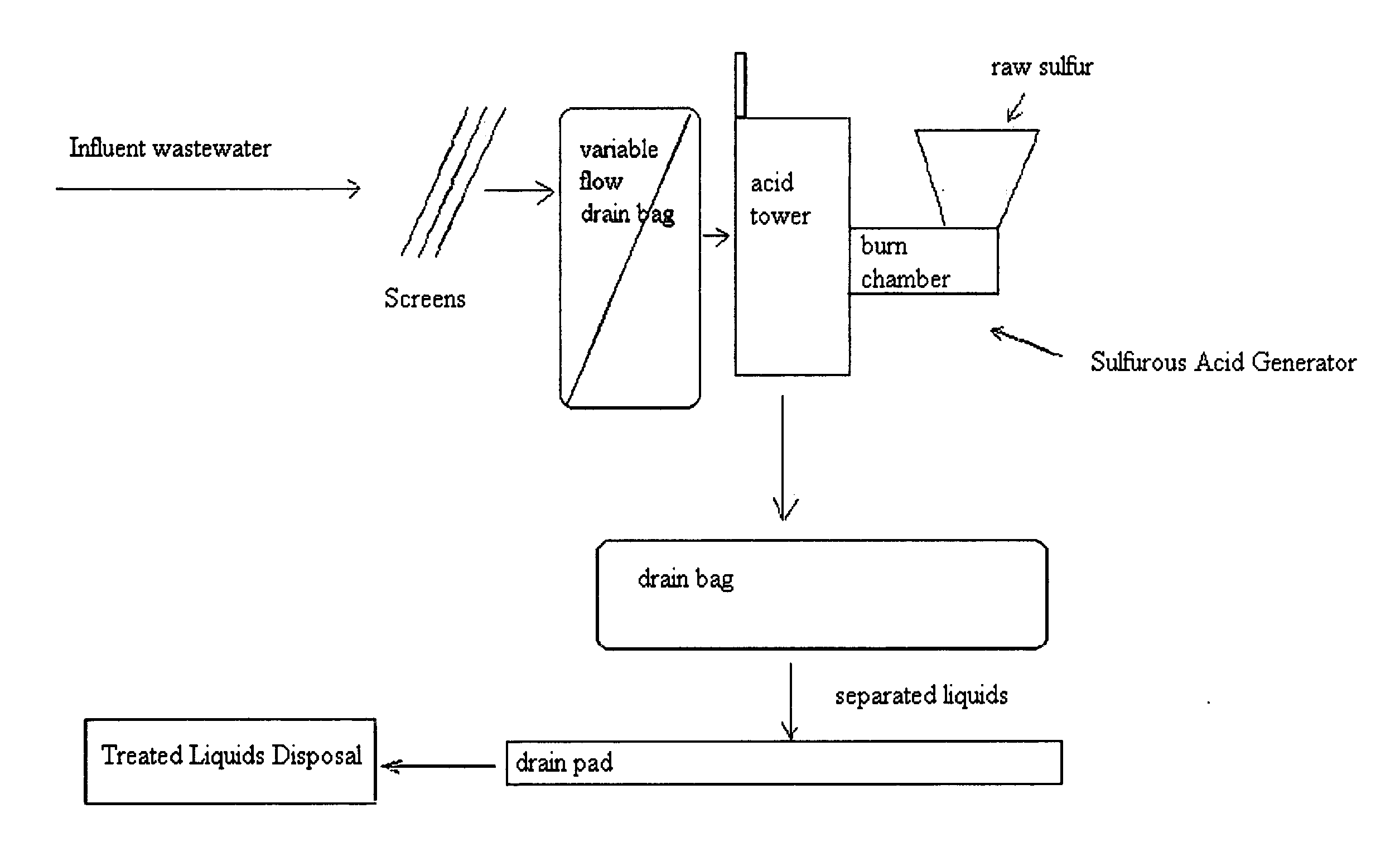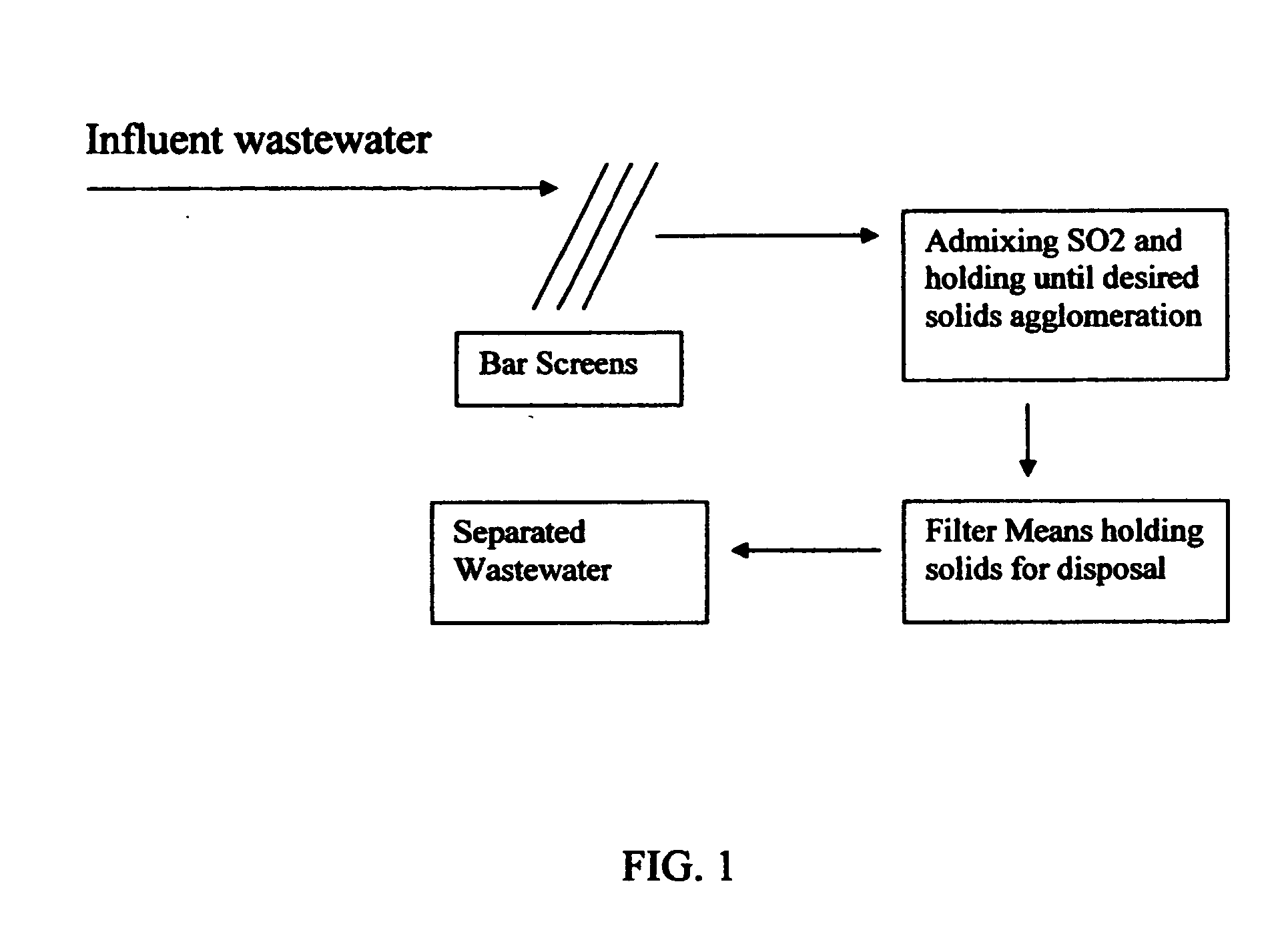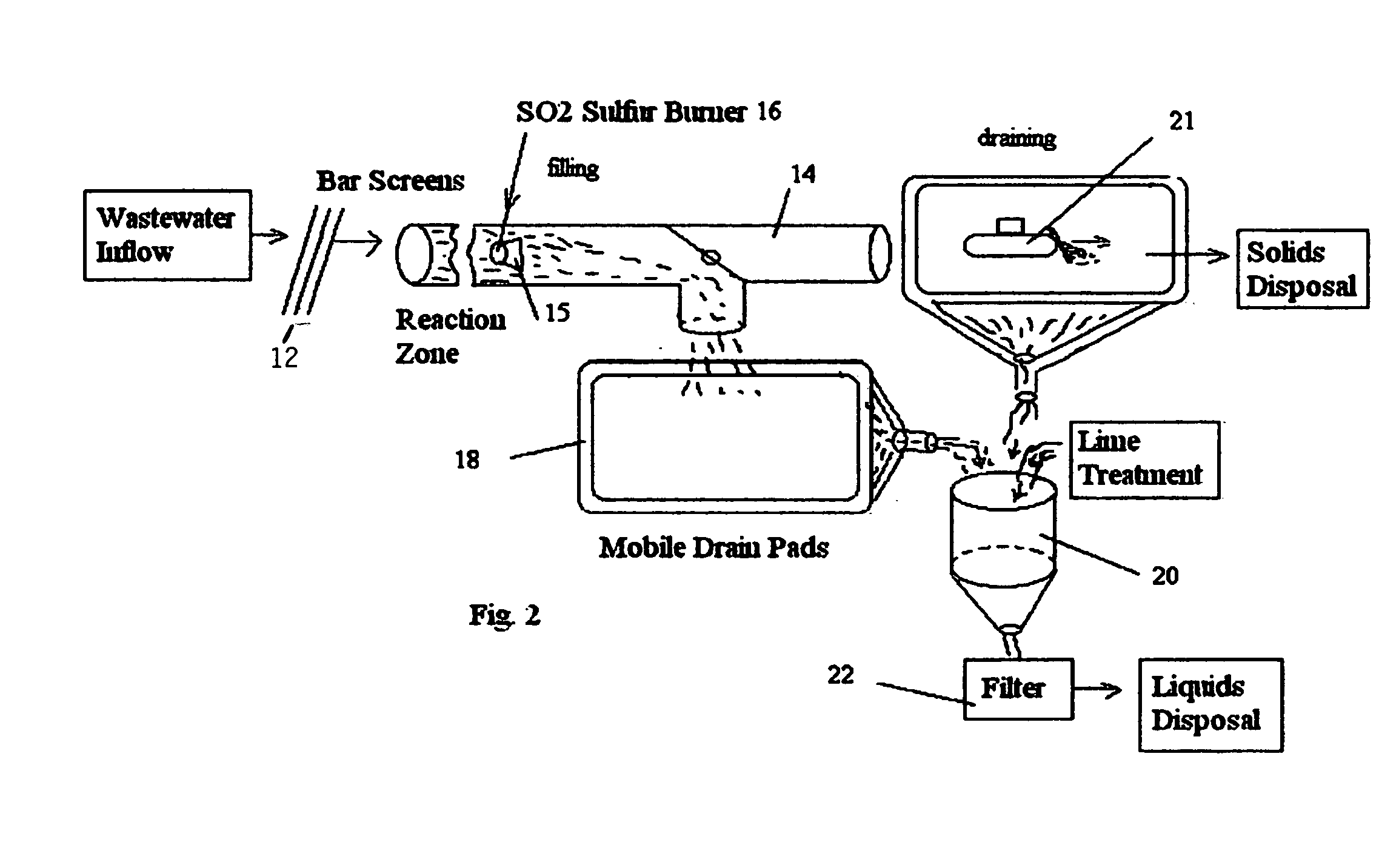Wastewater treatment apparatus
a wastewater treatment and equipment technology, applied in the direction of multi-stage water/sewage treatment, other chemical processes, separation processes, etc., can solve the problems of unsuitable material for any beneficial use, and difficult problems in the sludge or biosolids arising from industrial discharges. achieve the effect of promoting rapid bacterial, algae and plant growth, and reducing the sodium adsorption ratio (sar)
- Summary
- Abstract
- Description
- Claims
- Application Information
AI Technical Summary
Benefits of technology
Problems solved by technology
Method used
Image
Examples
Embodiment Construction
[0074]FIG. 1 illustrates a typical the layout of the chemical dewatering method disinfecting and adjusting the wastewater for algae propagation.
[0075]FIG. 2 illustrates the simplest embodiment of a skid mounted sulfur dioxide wastewater treatment plant 10. The influent wastewater inflows are preliminarily screened with bar screens 12 before entering a reaction vessel 14 structured as a serpentine polyurethane acid resistant pipe 14. The serpentine pipe 14 may have a gas diffusion mixer 15 mounted therein to admix sulfur dioxide from a skid mounted sulfur burner 16 to separate the solids from the liquids by agglomeration. Or, the sulfur burner 16 itself may be used to admix sulfur dioxide into the wastewater streams where the solids concentrations are fairly low (1 to 3% by weight). The wastewater microorganisms are killed by the SO2 exposure. The serpentine pipe 14 is flexible and has a T-bend with valve 17 to direct the separating fluid mixture onto mobile drain pads 18. At least t...
PUM
| Property | Measurement | Unit |
|---|---|---|
| pH | aaaaa | aaaaa |
| pH | aaaaa | aaaaa |
| concentration | aaaaa | aaaaa |
Abstract
Description
Claims
Application Information
 Login to View More
Login to View More - R&D
- Intellectual Property
- Life Sciences
- Materials
- Tech Scout
- Unparalleled Data Quality
- Higher Quality Content
- 60% Fewer Hallucinations
Browse by: Latest US Patents, China's latest patents, Technical Efficacy Thesaurus, Application Domain, Technology Topic, Popular Technical Reports.
© 2025 PatSnap. All rights reserved.Legal|Privacy policy|Modern Slavery Act Transparency Statement|Sitemap|About US| Contact US: help@patsnap.com



